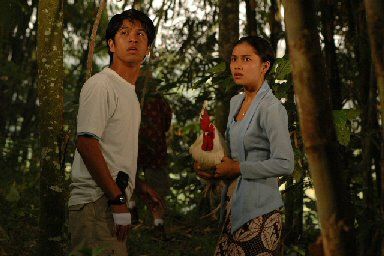It seems that in recent years, any films from the country, made in the country, and created by its native residents do have a certain epic quality which make them hard to ignore amidst the crowd of CGI-ridden films in recent years. The sentence actually leads us thinking, what is it with New Zealand filmmakers who can turn otherwise mindless films heavy on visual effects into something of, say, award-winning works?
Peter Jackson gives his emotion to The Lord of The Rings trilogy, and even King Kong is considered one of the greatest dramatic achievements in this time. Andrew Adamson gives a life to The Chronicles of Narnia: The Lion, The Witch and The Wardrobe, making the film a pleasant to watch despite the heavy-handed action sequence. Not to be left behind with these two fellow New Zealander, Vincent Ward ambitiously embarks on a project of bringing up a story about a heroine who challenges the race diversion between the white and the Maori tribe in the late 17th century.

The River Queen tells the story of the heroine in a poetic way that often feels like a bridge between Jackson’s usual sweeping action scenes and John Huston’s Western-hearted films. The latter influence could not be more mistaken as the main character, Sarah O'Brien, is given a large portion in handling her emotional conflicts, torn between her Irish heritage, and her enduring motherhood, which eventually led her becoming a Maori herself. The kind of character who faces psychological obstacles in a physical struggle could be played by Humphrey Bogart or Gary Cooper in the past, and this gives Samantha Morton her own edge.
Already known as an actress with skillful talents, Morton gives a daunting performance in such a difficult role like this. Fearless and emotionally naked, she injects the film with her unmistakably commanding presence, making her stands tall above the rest of the cast, as her role is intended her to be. It is simply hard to see anyone else is up to challenges she clearly has gone through in inhibiting her character here.
If only the promotional material is daring enough to put ‘Samantha Morton is The River Queen’.





